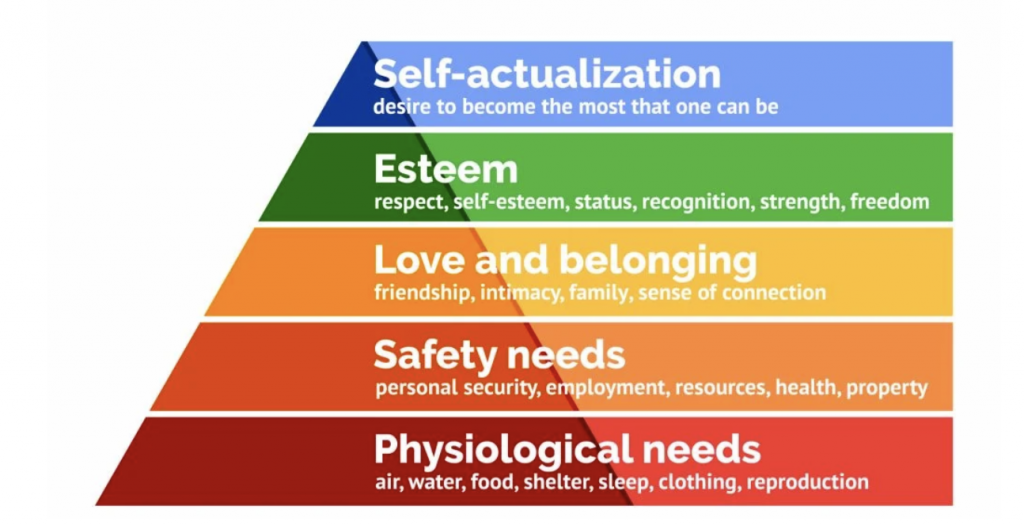Building a strong team culture in a distributed setting requires an intentional effort and the right strategies. Companies need to focus on creating a sense of connection, belonging, and shared values among their remote teams just as they would for a team in an office. By leveraging different strategies, companies can ensure that their remote teams are connected with each other and feel like they belong to the same organisation to create that company culture.
This article looks at what company culture is to help you understand why it’s so important, as well as looks at the different strategies and considerations needed to build a strong remote team culture.
What does company culture look like for remote teams?
Before we understand what company culture looks like for remote teams, let's first understand exactly what company culture is.
One study defines company culture as ‘a shared set of workplace beliefs, values, attitudes, standards, purposes and behaviours.’ Ultimately, it’s a feeling of connection and bonding with coworkers who share similar values. This creates a sense of belonging.
The main difference between a remote company culture from a traditional office setting is that it isn’t tied to a space. Rather, employees will be working in their own space and their form of workplace connection will become virtual. This is why establishing a strong remote company culture is so important, steps have to be taken to ensure that no employees are alienated.
Introducing new team members, recognising achievements and encouraging trust and transparency are still very much a thing, the only difference being that for a remote team the way we do and express these things will become virtual instead. Company culture is generally the same in both a remote and traditional office setting with only a few minor differences, mostly surrounding how the culture is implemented.
Why is company culture so important for remote teams?
Working remotely can lead to a few concerns, including isolation and loneliness. A good company culture can mitigate these issues. Companies that prioritise culture in a remote setting can foster an environment of collaboration, trust, and communication. Company culture could be the difference between a successful distributed team and an unsuccessful one. Company culture can affect a businesses;
Brand Reputation
A good company culture will reflect positively on a company's brand. This will signal how you do business as well as encourage employees and customers to perceive your company in a positive light.
Employee Retention
One study found that ‘A driving force behind the high turnover rate is directly related to company culture’. A company's culture reflects workplace beliefs, values and standards, something that’s increasingly important for employees. With this in mind, a good company culture will help you attract new talent and retain the talent you’ve got!
Improved Productivity
As mentioned previously, a positive company culture helps improve employee morale and happiness. A fact that has a number of benefits, one of which being, is that a happy employee is a more productive one. This helps to mitigate feelings of stress and loneliness that may occur for remote workers.
Strategies to build a strong team culture
Define your remote work policy
For a remote work policy to be effective, your team must understand what is expected of them. Define how often they should be online, whether they can have flexible work hours or not, and how communication should be maintained.
Defining your remote work policy will help reinforce your company culture as it reassures employees on your values and what’s to be expected of them. With this in mind, defining your remote work policy is important for ensuring your employees know how work will differ from a traditional setting to working in a remote setting.
Perfect your onboarding process
Onboarding refers to the process where new hires are integrated into an organisation. Through this process they learn about a businesses structure, culture and values.
When it comes to onboarding there are a few areas that are crucial to go over: legalities, introductions and defining expectations. Getting your new employees introductions done right is a great way to introduce your company culture. This will help employees feel comfortable around each other, and help to avoid issues regarding isolation.
Of course, for remote teams this will all be different. We’ve included a list of steps that you should include in your onboarding process.
Preparation. Be sure you have prepared how you’re going to go through the onboarding process, this might be supplying technology, making a timetable, or scheduling video calls.
Technology. Give your employee access to all of the necessary tech. Whether this is giving them access to company accounts or logins. Additionally, be sure to have someone available if they have any questions regarding this.
The Legalities. It’s absolutely crucial that you go over the legal bits when onboarding your remote employee. This includes areas such as holiday requests, working hours and when staff will get paid.
Understand the manager's role. The remote manager will be responsible for defining expectations, work goals, and ensuring that everyone is on track with their tasks.
For more information on how to successfully onboard remote employees click here!
Communicate, collaborate and care.
As remote teams are not in the same location, collaborating becomes a significant part of creating a strong team culture.
One study said ‘Teams can often accomplish more together than the individuals in the team could alone.’
It may not come as a surprise that one of the best ways to build a strong team culture is to communicate and collaborate. But this is a huge part of remote working that can often get overlooked.
Meetings
One of the best ways to communicate and collaborate with your remote team is through the use of virtual meetings, whether this is a team meeting or simply a one-on-one you will still reap the benefits.
Moreover, meetings are a great way to build rapport, and ensure your business values and goals are being met by your employees. Meetings are also a time for your employees to raise any concerns or issues they may have so that you can solve them, therefore building and cementing their trust in your business.
Watercooler Chats
So, what exactly is the water cooler conversation?
It is a day-to-day activity where staff members stand together (around a water cooler) and have face to face casual conversations with each other.
This is easy in an office due to the proximity of other colleagues, but how can you have this when the only thing connecting your employees is an internet connection?
For us, one thing we have is an Instant Messaging (IM) channel called water-cooler, where we share general and fun things we’ve found. They can range from interesting things such as what the Amazon, Google, Facebook logos were when they started out.
To funny memes we’ve seen.
It helps simulate that water-cooler effect and gets people interacting with each other.
Create an online work environment
Creating a positive and productive online environment for remote workers is one of the most important elements of building a company culture. Remote work can be isolating, so it’s essential to create a sense of community. You can use a range of tools to create a similar environment to the office. Whether for socialising and check-ins, or to schedule regular virtual team-building activities. Encourage team members to share their personal interests and hobbies, and make time for group discussions and collaboration outside of work-related tasks.
Collaboration tools are essential for remote workers to stay connected and productive. Tools like Slack, Trello, Pukkateam and Zoom allow teams to communicate easily, track project progress, and hold virtual meetings. Similarly to how you would in an office, the only difference being that it is done virtually. Depending on the nature of your work, you may find other collaboration tools that further help build an online work environment. The key to success is to be open to experimenting with new tools and finding what works best for your team.
Understand your employees needs
It is essential to understand the needs of your employees to create a positive work environment, boost employee satisfaction and build a strong team culture. When employees feel heard and valued, they are more likely to work hard and stay loyal to your company. One way to understand your employees needs is to look at Maslow’s Hierarchy of needs.
This theory is a framework of human motivation that describes the stages of human growth and development. It looks at how the bottom needs in the pyramid must be met in order to achieve the higher needs at the top.
Maslow's hierarchy of needs is a valuable tool for understanding human motivation and development. It helps individuals identify and prioritise their needs and take actions to fulfil them.
Applying this to a remote office setting, in order to build a strong team culture you must first focus on the individuals. When working remotely your team may face different issues such as isolation or a lack of recognition.
An example for meeting the Esteem section would be recognising your employees achievements. This can help you on your way to meeting your employee needs! Public recognition of a job well done is one of the most motivating ways to get your team more invested in the company, it shows that their work is appreciated and their contributions recognised. For a remote team, you could publicly recognise achievements within team meetings to imitate the feeling of an office setting.
Another example, for the Esteem section of the pyramid, could be something as simple as creating a high five chat to recognise employees achievements. It has been shown that recognising hard work can increase happiness and satisfaction in the job. Once an individual's needs and values are met your work culture will become even stronger and your team will be able to reach the same potential they would in an office setting.
Conclusion
Building a strong team culture in a distributed setting is not an easy task. It requires the right strategies, tools, and technology to ensure that everyone feels connected and part of the team.
With these strategies in place, companies can create an environment where employees feel like they belong and that their work is valued.


 Form the Blog
Form the Blog
